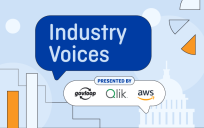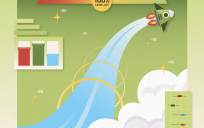Complex problems require new thinking, and sometimes that means stripping the question down to simple components.
The New York Times detailed how Apple uses a series of Picasso’s lithographs to teach this concept. The artist moved from a full sketch to a minimal outline through the course of 11 prints. A spare collection of lines provides everything the viewer needs to understand the final depiction of a bull.
The Innovation Team here at EPA has tested several different ways to think about, frame and solve problems.
During the past year, we’ve worked with TopCoder, one of several competition consulting companies. TopCoder breaks problems into smaller pieces built exclusively around data. An online crowdsourcing community then attempts to solve these problems without relying on the benefit of context, scientific or otherwise.
The EPA ToxCast Challenge asked these data scientists to predict the lowest effect levels for chemicals. That’s the lowest dose at which a given chemical could cause effects in traditional toxicity tests.
Competitors used newly released EPA data on 1,800 chemicals from a diverse range of applications, including industrial processes, consumer products and food additives.
With more than 83,000 registered chemicals, we don’t always know how these substances affect human health. EPA has worked to fill the gaps in the data and accelerate the pace of chemical testing through federal collaborations such as Tox21 and automated screening technologies.
And based on this competition, crowdsourcing is one new way to harness the talents of many minds who can help us solve scientific problems.
In the span of a few months, 50 competitors in the data competition submitted more than 800 algorithm solutions. Many people did not have expertise in chemistry-related fields. That group included several of the winners, whose results matched or exceeded solutions provided by EPA.
Plenty of work remains before we can rely solely on an accurate, reliable predictive algorithm. Still, the competition demonstrated the effectiveness of working with the crowd and the potential to leverage the massive stores of data available at many federal agencies.
- Has your organization worked with companies that host prize competitions?
- Competition consultants often break complicated problems into smaller, solvable chunks – how could you apply that method to problems in your organization?
Dustin Renwick works in conjunction with the Innovation Team in the U.S. Environmental Protection Agency’s Office of Research and Development. The opinions expressed here are the author’s and do not reflect EPA policy, endorsement, or action. EPA does not verify the accuracy or science contained here.
Dustin Renwick is part of the GovLoop Featured Blogger program, where we feature blog posts by government voices from all across the country (and world!). To see more Featured Blogger posts, click here.





I think the starred sentence below shows the real power of crowdsourcing:
“In the span of a few months, 50 competitors in the data competition submitted more than 800 algorithm solutions. **Many people did not have expertise in chemistry-related fields.** That group included several of the winners, whose results matched or exceeded solutions provided by EPA.”
That’s pretty amazing that you’re able to leverage non-experts to gain award-winning insights. Well done!
Agreed! The results can be amazing when you apply the right data set to the right problem / question.